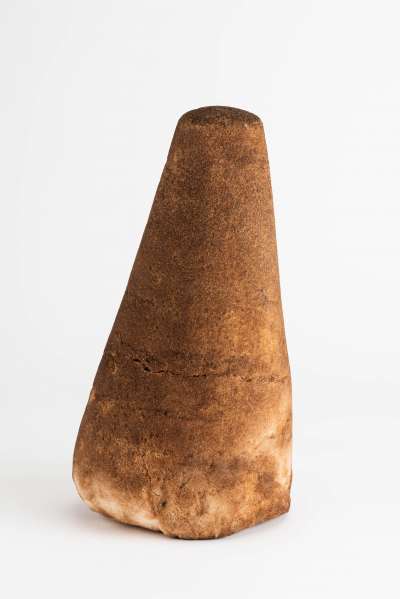Sugar loaf
This very fragile sugar loaf was found at St Nicholas Priory.
Dark, semi-refined sugar was sent to England from plantations where enslaved Africans were used as labour. To prepare it for sale it was melted and clarified in large pans, poured into ceramic moulds and left to crystallise. Any remaining sugar syrup was drained out into syrup pots in which the moulds stood. This could be made into rum.
In the 1600s, Exeter became a major centre for sugar refining. There had been a refinery at the Bishop’s Palace in the 1650s and between 1680 and 1720 production of refined sugar increased. Only Bristol and Liverpool were busier than Exeter in the sugar trade at that time. Samuel Buttall, who had a sugar plantation in South Carolina, opened a refinery in Topsham in 1684. Charles Buttall, his brother, also supplied the factory from his plantation in Barbados. Another site has been excavated in Exeter’s Goldsmith Street.
Dark, semi-refined sugar was sent to England from plantations where enslaved Africans were used as labour. To prepare it for sale it was melted and clarified in large pans, poured into ceramic moulds and left to crystallise. Any remaining sugar syrup was drained out into syrup pots in which the moulds stood. This could be made into rum.
In the 1600s, Exeter became a major centre for sugar refining. There had been a refinery at the Bishop’s Palace in the 1650s and between 1680 and 1720 production of refined sugar increased. Only Bristol and Liverpool were busier than Exeter in the sugar trade at that time. Samuel Buttall, who had a sugar plantation in South Carolina, opened a refinery in Topsham in 1684. Charles Buttall, his brother, also supplied the factory from his plantation in Barbados. Another site has been excavated in Exeter’s Goldsmith Street.
Object Summary
- Accession Loan No.
- 494/2005
- Collection Class
- Social and industrial history
- Collection Area Region
- Northern Europe
- Material
- sugar
- Common Name
- sugar loaf
- Simple Name
- sugar loaf
- Period Classification
- Victorian (1837-1901)


